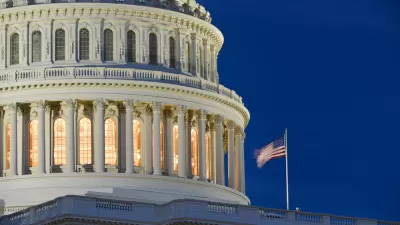The loser list is short and no surprise: The governor-elects of OH and WI had campaigned against HSR projects in their states-they got their wish. The recipients of the redirected $1.2 billion were the surprise,with CA, FL, and WA being the happiest.
All funds are from the American Recovery and Reinvestment. However, there is a bill that would redirect unspent ARRA funds back to the treasury that would alter these awards.
"Under the Recovery Act, the Federal Railroad Administration originally announced $810 million for Wisconsin's Milwaukee-Madison corridor and $400 million for Ohio's Cincinnati-Columbus-Cleveland "3C" route. The Federal Railroad Administration will redirect $810 million from Wisconsin and $385 million from Ohio, and will work with these states to determine whether they have already spent money under their contracts that should be reimbursed."
The top three recipients of the redirected Recovery Act funds are:
California: up to $624 million
Florida: up to $342.3 million
Washington State: up to $161.5 million
Thanks to NARP
FULL STORY: U.S. Department of Transportation Redirects $1.195 Billion in High-Speed Rail Funds

Manufactured Crisis: Losing the Nation’s Largest Source of Unsubsidized Affordable Housing
Manufactured housing communities have long been an affordable housing option for millions of people living in the U.S., but that affordability is disappearing rapidly. How did we get here?

Americans May Be Stuck — But Why?
Americans are moving a lot less than they once did, and that is a problem. While Yoni Applebaum, in his highly-publicized article Stuck, gets the reasons badly wrong, it's still important to ask: why are we moving so much less than before?

Using Old Oil and Gas Wells for Green Energy Storage
Penn State researchers have found that repurposing abandoned oil and gas wells for geothermal-assisted compressed-air energy storage can boost efficiency, reduce environmental risks, and support clean energy and job transitions.

Updating LA’s Tree Rules Could Bring More Shade to Underserved Neighborhoods
A new USC study finds that relaxing Los Angeles’ outdated tree planting guidelines could significantly expand urban tree canopy and reduce shade disparities in lower-income neighborhoods, though infrastructure investments are also needed.

California's Canal Solar Projects Aim to Conserve Resources and Expand Clean Energy
California’s Project Nexus has begun generating electricity from solar panels installed over irrigation canals, with researchers and state agencies exploring statewide expansion to conserve water and boost clean energy production.

HHS Staff Cuts Gut Energy Assistance Program
The full staff of a federal program that distributes heating and cooling assistance for low-income families was laid off, jeopardizing the program’s operations.
Urban Design for Planners 1: Software Tools
This six-course series explores essential urban design concepts using open source software and equips planners with the tools they need to participate fully in the urban design process.
Planning for Universal Design
Learn the tools for implementing Universal Design in planning regulations.
Heyer Gruel & Associates PA
City of Moreno Valley
Institute for Housing and Urban Development Studies (IHS)
City of Grandview
Harvard GSD Executive Education
Salt Lake City
NYU Wagner Graduate School of Public Service
City of Cambridge, Maryland



























